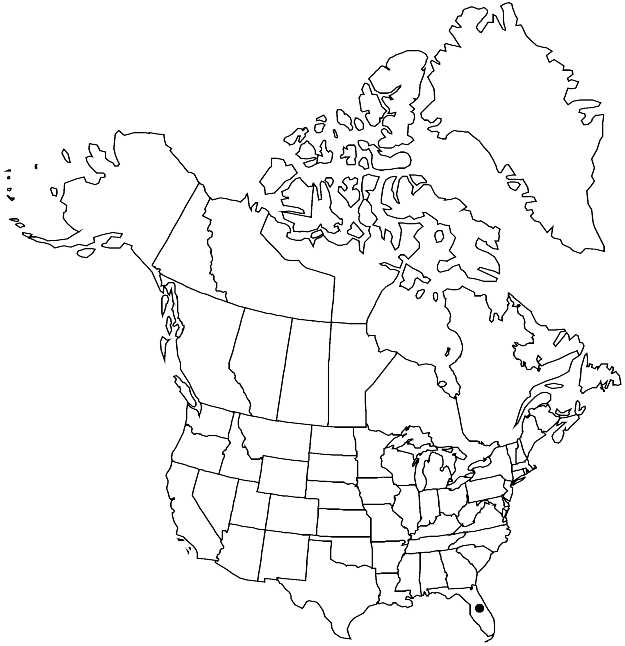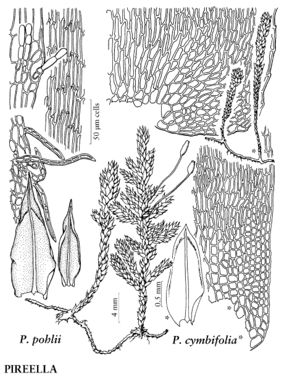Pireella cymbifolia
Rev. Bryol. 40: 17. 1913.
Plants 0.2–2.5 cm. Stems simple or sparsely branched. Distal stipe leaves ovate-lanceolate, 1.8 × 0.9 mm; base not auriculate or rounded, decurrent; apex broadly acuminate; costa percurrent in distal leaves; alar cells in 7–14 rows of 2–23 cells, quadrate or short-rectangular, into decurrent wing and distally along margin; medial laminal cells 16–46 × 2–3 µm. Branch leaves strongly seriate, strongly concave, 1.1–1.7 × 0.3–0.6 mm; apex short, broad; medial laminal cells 16–46 × 2–3 µm, strongly prorate. [Seta 0.5–0.9 cm. Capsule 1.8–2.7 × 0.9 mm. Spores spheric or ovoid, 30–41 × 28–35 µm].
Habitat: Dry evergreen forests, lowland deciduous forests and hammocks, flooded palm woodlands, disturbed woodlands, trees, tree roots, bushes, decaying wood, limestone, sandstone
Elevation: low to moderate elevations (0-700 m)
Distribution

Fla., s Mexico, West Indies, Central America, South America.
Discussion
Plants of Pireella cymbifolia are usually small and scarcely branched, but well-grown plants (for example, in the Florida Keys) may be larger and irregularly pinnate. The leaf bases are decurrent, with several rows of quadrate alar cells extending distally along the margin. Pireella cymbifolia is restricted to southern Florida in the flora area. The leaves are often very small for most of the stipe, 0.5 × 0.3 mm. Superficially, P. cymbifolium may resemble Henicodium; under the microscope, the more extensive area of oblate cells in the leaf base and distinctly plicate leaves of Henicodium should prevent confusion.
Selected References
None.
